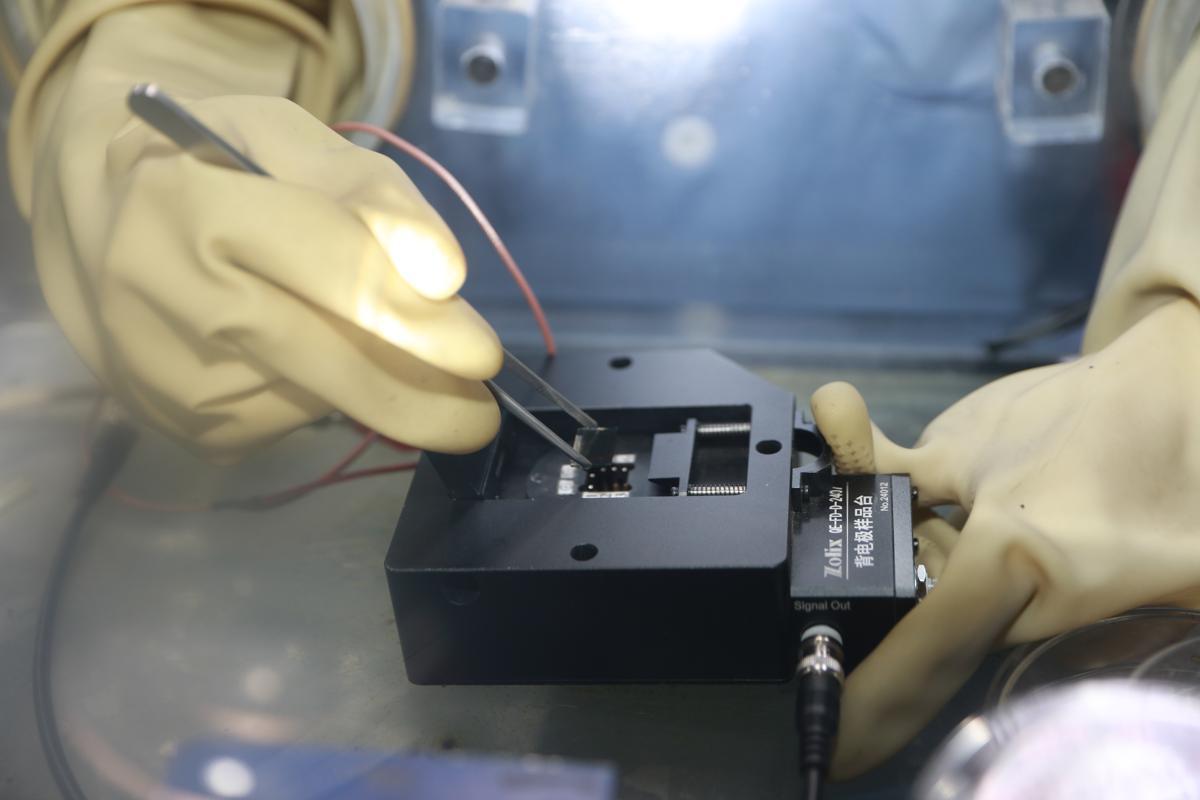Team hits breakthrough in perovskite solar cells


A research team from Shanghai-based East China University of Science and Technology has made a significant breakthrough in the field of perovskite solar cells, which may provide a new solution for their industrial application.
They uncovered the key mechanism behind the instability of such cells, and developed a novel solar cell device that can operate for a record-breaking 3,670 hours.
The operation was under standard illumination and high temperature of 90 C, and only the period before the efficiency reduced to 97 percent was calculated.
A paper about the research by a team from the university's School of Materials Science and Engineering was published on the website of the journal Science on Friday.
Perovskite solar cells, as a promising new photovoltaic technology, offer advantages, such as high efficiency, low cost, flexibility, and lightweight properties, making them crucial for addressing energy and environmental challenges.
However, device instability remained a primary obstacle to their industrial development.
Researchers identified the crucial mechanism causing such instability — the photo-mechanical degradation effect — and proposed a novel approach involving graphene-polymer mechanical reinforcement of perovskite materials.
They discovered that under sunlight, perovskite materials exhibit significant photo-induced expansion, leading to compression between crystals and the accumulation of local stress near grain boundaries, accelerating defect formation and resulting in performance losses in perovskite solar cells.
"Through the assembly of a single-layer graphene onto the surface of perovskite thin films using PMMA polymer as an interfacial coupling layer, we successfully created a new type of perovskite solar cell device," said Hou Yu, a lead researcher on the team.
"Leveraging the excellent mechanical properties of graphene and the coupling effect of the polymer, the modulus and hardness of the perovskite thin film were doubled, significantly restraining lattice dynamic expansion effects under illumination conditions," he said.
In their research, they demonstrated that the graphene-polymer bilayer structure reduced lattice deformation rates from +0.31 percent to +0.08 percent, effectively mitigating material damage caused by expansion near grain boundaries.
Through a combination of dynamic structural evolution experiments and computational modeling, the research team validated the long-term stability of this perovskite device under conditions of illumination, high temperature and vacuum environment, providing support for the reliability and stability of perovskite solar cells.
- Chinese association opposes US move to cancel duty-free treatment for low-value goods
- Discover the charms of Qingming Festival with Yuanxi
- Philippine spy network broken up
- Green funerals rise in Mother Nature's final embrace
- Cyberattacks on Games traced to US
- Eco-burials take root in funeral industry




































